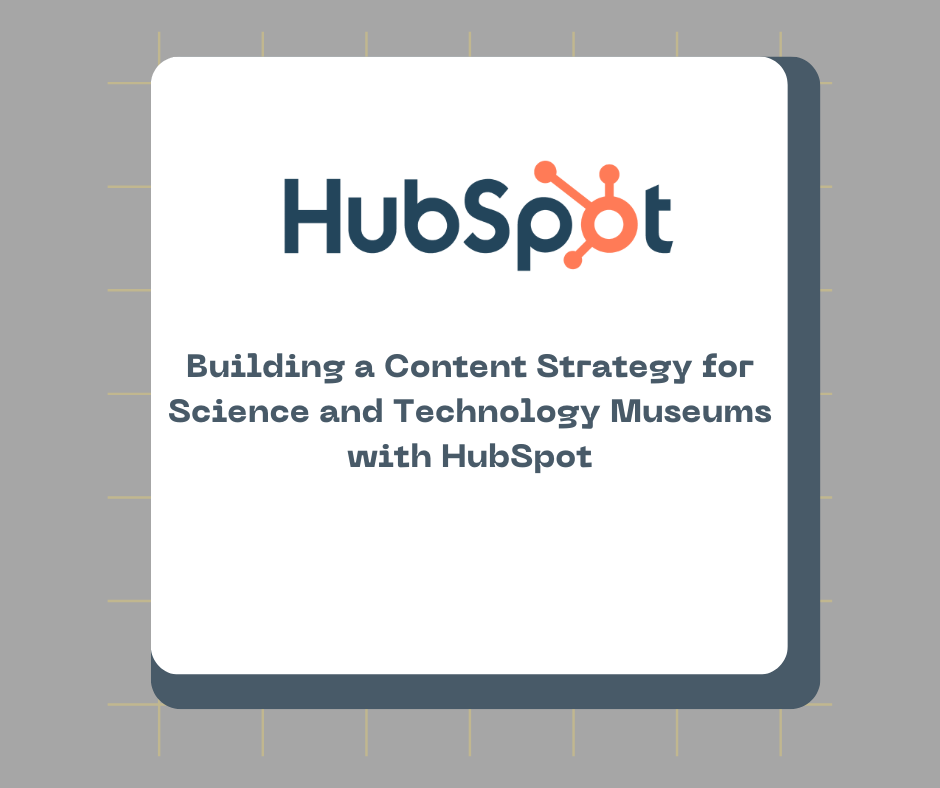Creating a compelling content strategy is crucial for any organization, and science and technology museums are no exception. In an age where digital content plays a significant role in engagement, these museums can harness the power of HubSpot's suite of marketing tools to reach new audiences, educate visitors, and maintain lasting relationships with patrons. This article explores how science and technology museums can build an effective content strategy using HubSpot’s platform.
Why a Content Strategy Matters for Science and Technology Museums
Science and technology museums face unique challenges in marketing and engagement. They must remain relevant in a rapidly changing landscape, compete with countless digital distractions, and convey complex scientific concepts in engaging ways. An effective content strategy can:
- Attract New Visitors: Position the museum as a must-visit attraction for science enthusiasts, families, and tourists.
- Educate and Engage: Provide educational value and maintain visitor interest long after they leave.
- Build Long-Term Relationships: Foster lasting connections with members, donors, and the scientific community.
Steps to Building a Content Strategy with HubSpot
HubSpot’s integrated platform provides museums with the tools they need to plan, create, and measure impactful content. Here’s a step-by-step guide to building a successful content strategy:
1. Identify and Understand Your Audience
The first step in building any content strategy is understanding your audience’s demographics, interests, and needs. HubSpot’s CRM and marketing tools can help segment audiences for precise targeting.
- Strategy Example: Analyze visitor data to identify key audience segments like families, educators, students, and technology professionals. Create personas for each segment that detail their preferences, pain points, and content needs.
2. Set Clear Objectives
Establishing clear goals ensures your content strategy aligns with the museum’s mission and marketing objectives.
- Strategy Example: Define objectives like increasing exhibit attendance, growing membership, or attracting donations. Set measurable KPIs (Key Performance Indicators) like visitor growth, social media engagement, or newsletter sign-ups.
3. Develop a Content Calendar
A well-structured content calendar ensures consistent messaging across all channels and keeps your audience engaged year-round.
- Strategy Example: Plan weekly blog posts, social media updates, email newsletters, and video content. Align these posts with significant events like exhibit launches, special programs, or scientific milestones to generate excitement.
4. Leverage Blog and Website Content
HubSpot’s CMS (Content Management System) and blogging tools provide flexibility and control over your website content.
- Strategy Example: Write educational blog posts explaining complex scientific concepts in engaging ways. Showcase behind-the-scenes glimpses of upcoming exhibits, interview curators and scientists, or provide sneak peeks of interactive displays.
5. Create Engaging Email Campaigns
Email remains one of the most effective channels for nurturing leads, retaining members, and attracting donations. HubSpot’s email marketing tools enable museums to craft targeted, automated campaigns.
- Strategy Example: Send personalized emails based on visitor personas. Share updates about new exhibits with families, highlight teacher workshops for educators, or promote lectures and events for the scientific community. Use marketing automation to follow up with visitors who recently attended an event.
6. Build Social Media Engagement
Social media is essential for reaching new audiences and driving engagement. HubSpot’s social media tools enable seamless management across platforms.
- Strategy Example: Share bite-sized content like fun science facts, videos of interactive exhibits, and curator Q&As. Run targeted ads for specific audience segments to promote upcoming events or exhibits.
7. Craft Valuable Educational Resources
Museums have unique opportunities to create educational content that benefits teachers, students, and the general public.
- Strategy Example: Develop downloadable guides, lesson plans, or activity sheets to support school groups and families. Use HubSpot’s CMS to host a resource hub where teachers can find relevant materials. Offer these resources in exchange for visitors’ contact information to grow your email list.
8. Create Compelling Video Content
Video content can bring exhibits and concepts to life in a way that’s easily consumable.
- Strategy Example: Produce short explainer videos that delve into scientific concepts, offer virtual tours of the museum, or showcase behind-the-scenes preparations for exhibits. Share these videos on social media, in email newsletters, and on your website.
9. Host Webinars and Virtual Events
Virtual events enable museums to reach a broader audience and provide unique opportunities for engagement.
- Strategy Example: Use HubSpot’s event management tools to host webinars with scientists, virtual workshops, or panel discussions about current technology trends. Promote these events via social media, email, and your website, and follow up with attendees for feedback.
10. Measure and Refine Your Strategy
HubSpot’s analytics tools provide valuable insights into the performance of your content, helping refine and optimize your strategy.
- Strategy Example: Track metrics like blog views, social media engagement, email open rates, and event attendance. Use this data to understand what resonates with your audience and adapt your content calendar accordingly.
Best Practices for Implementing Your Content Strategy
- Focus on Storytelling: Craft narratives that captivate your audience, whether it’s a behind-the-scenes look or a compelling scientific discovery.
- Maintain Consistency: Ensure messaging and branding are consistent across all channels to reinforce the museum’s identity.
- Encourage Interactivity: Create quizzes, polls, and challenges that encourage visitors to participate actively.
- Optimize for SEO: Ensure website and blog content are optimized for search engines to reach a wider audience.
- Experiment and Adapt: Don’t hesitate to try new formats or topics and refine your strategy based on performance data.
Conclusion
A well-structured content strategy can help science and technology museums engage visitors more effectively, provide educational value, and build lasting relationships. By leveraging HubSpot’s CRM, email marketing, social media, and analytics tools, museums can streamline their content efforts and deliver valuable experiences that inspire and captivate their audience. In the rapidly changing digital age, a robust content strategy can ensure museums remain relevant and impactful.
Schedule your training session here and comment “Need Training” on the request form.

Comments